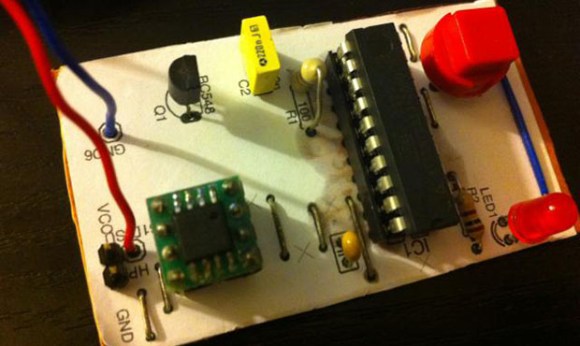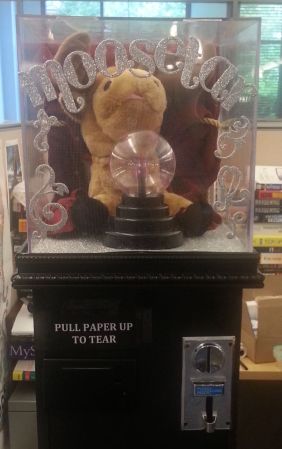
[Brittliv] made the mistake of getting her friends into Nerf weaponry, and so began the race to mutually secured destruction via foam darts. She may have the upper hand in this war, because her Nerf Vulcan sentry gun is both incredibly powerful and is able to be operated autonomously with a webcam featuring a friend or foe identification system.
The azimuth and elevation mount for the gun is made out of plywood, with each axis controlled by a single servo attached to an Arduino. Of course a stock Nerf gun would be fairly boring, so [BrittLiv] increased both the voltage going to the gun’s motor and the strength of the gun by replacing a 2kg spring with a 5kg spring.
Targets are tracked with a webcam using Processing and a bit of code from Project Sentry Gun. One interesting feature is a friend or foe tracking system; if the gun sees someone wearing a t-shirt with the Instructables logo, the target is identified as a friend and is not brutally mowed down with plastic darts.

















